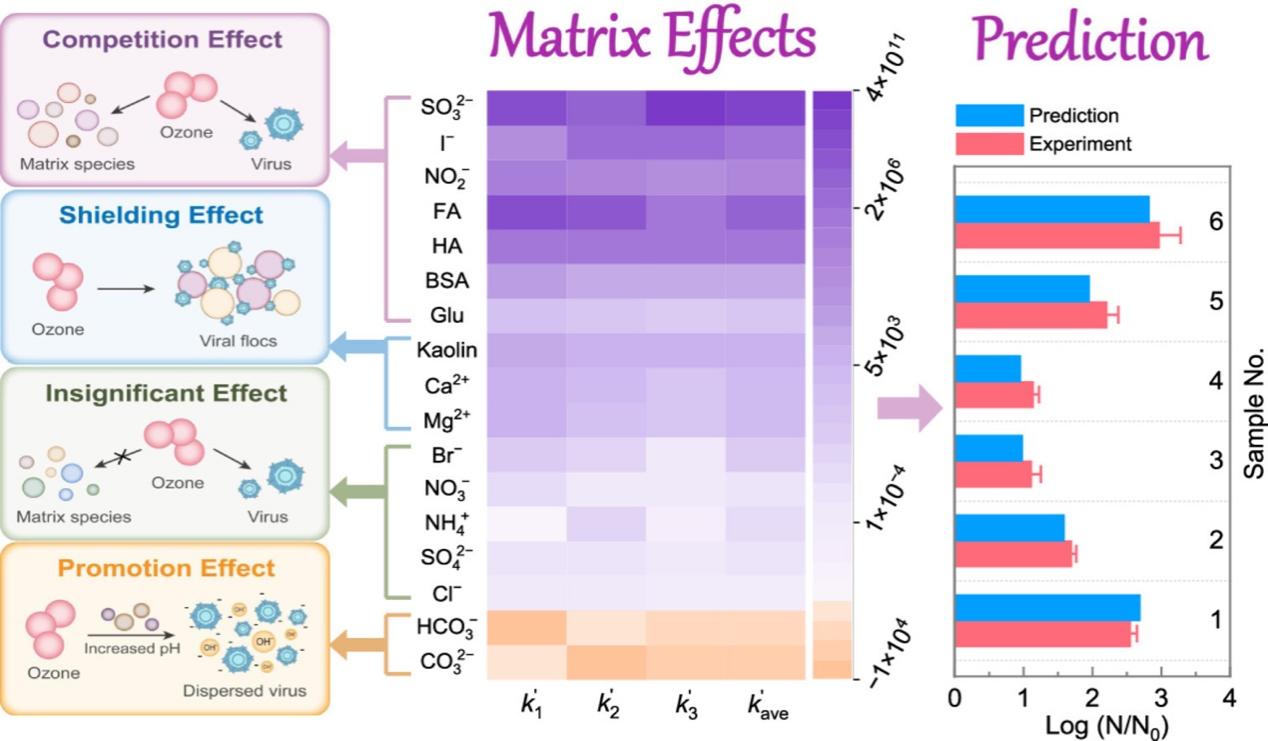Recently, Associate Professor Zhang Xiaoyuan’s research group at the School of Environment, Tsinghua University, has achieved significant advancements in the field of ozone inactivation of waterborne viruses. The team conducted a comprehensive study on how complex wastewater matrices affect the efficacy of ozone in inactivating viruses. Additionally, they developed a kinetic model to predict the effectiveness of ozone in virus inactivation across diverse and complex aquatic environments.

Figure 1. Mechanisms, Quantitative Comparison, and Model Prediction of the Impact of Wastewater Matrices on Ozone Inactivation of Waterborne Viruses
Ozone, as a potent oxidizing agent, is highly effective in inactivating waterborne pathogens. Nevertheless, its disinfection efficiency in wastewater can be substantially compromised by complex matrices. The research group led by Associate Professor Zhang Xiaoyuan at the School of Environment, Tsinghua University, has undertaken a comprehensive study combining simulations and experimental approaches to evaluate the impact of these complex wastewater matrices on virus inactivation by ozone. In this study, bacteriophage PhiX174 was used as a model virus to elucidate the effects of intricate matrix interactions within a continuous quenching flow system. The research successfully disentangled the influence of various coexisting substances in wastewater on the ozone inactivation process. By introducing the novel concept of the “equivalent ozone depletion rate constant,” the study standardized the quantification and comparison of different matrix effects, identifying critical factors that need to be controlled during practical wastewater treatment processes. This approach offers a fresh perspective on understanding matrix effects comprehensively. Additionally, a kinetic model was developed to predict ozone inactivation efficiency in complex water matrices with high accuracy and to assess the contributions of various substances to the reduction in inactivation efficiency. The methodologies and kinetic models established in this research provide a promising new tool for accurately forecasting ozone disinfection efficiency in real-world wastewater treatment scenarios.
On June 15th, the research findings were published in the journal Water Research under the title “Systematic Investigation and Modeling Prediction of Virus Inactivation by Ozone in Wastewater: Decoupling the Matrix Effects.” The corresponding author of the paper is Associate Professor Zhang Xiaoyuan from the School of Environment (SOE), Tsinghua University. Liang Zhiting, a SOE Ph.D. student, is the first author. The co-authors include Professor Huang Xia, master’s student Lu Kechao, and Ph.D student Xu Chenyang from the same school. This study was supported by the Major Program of the National Natural Science Foundation of China.
Paper link:https://doi.org/10.1016/j.watres.2024.121685





